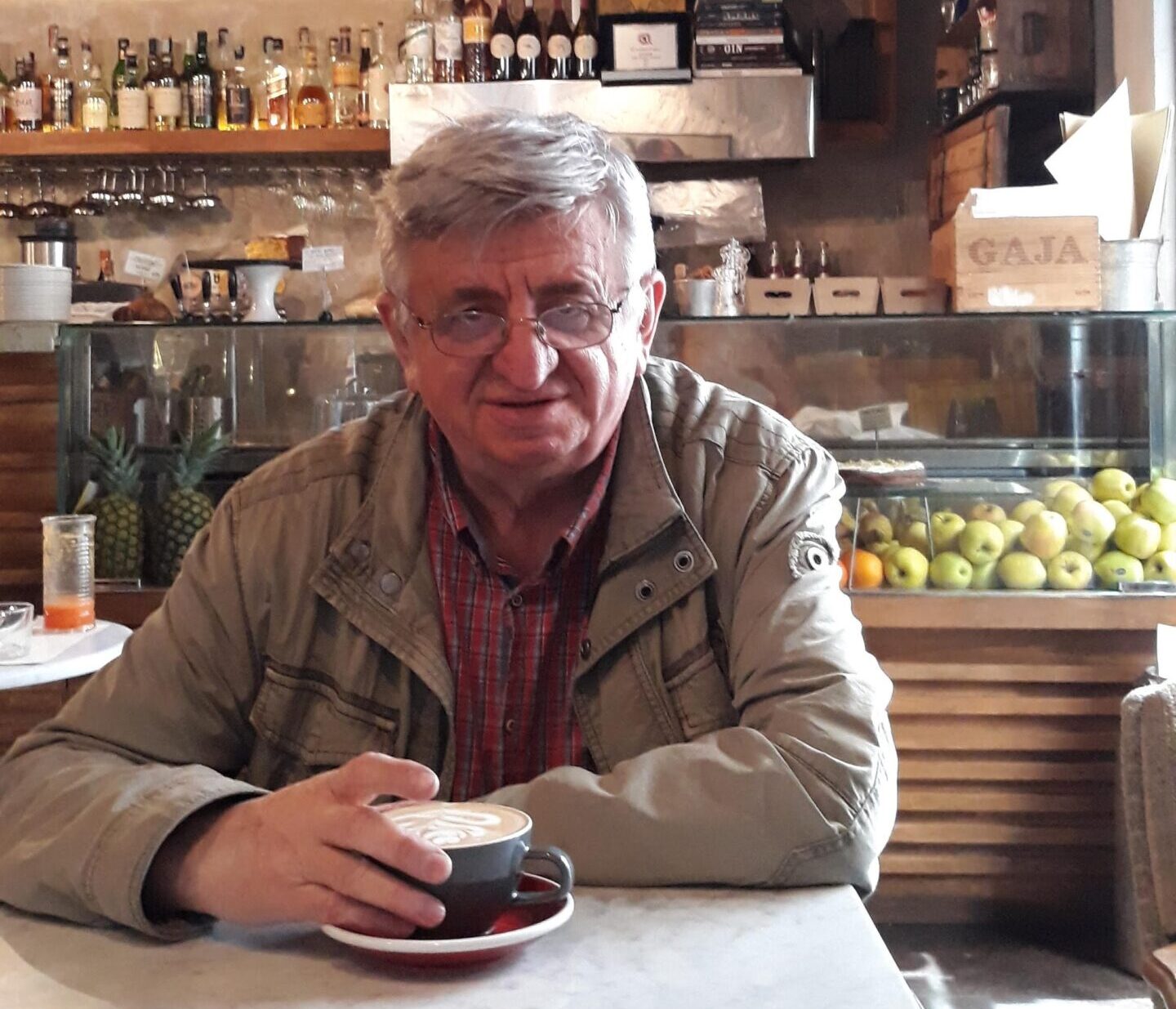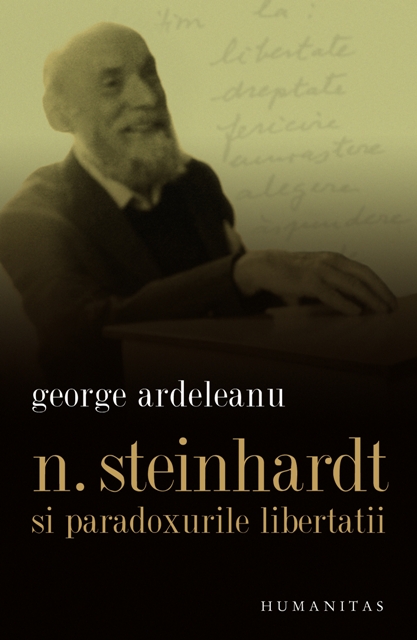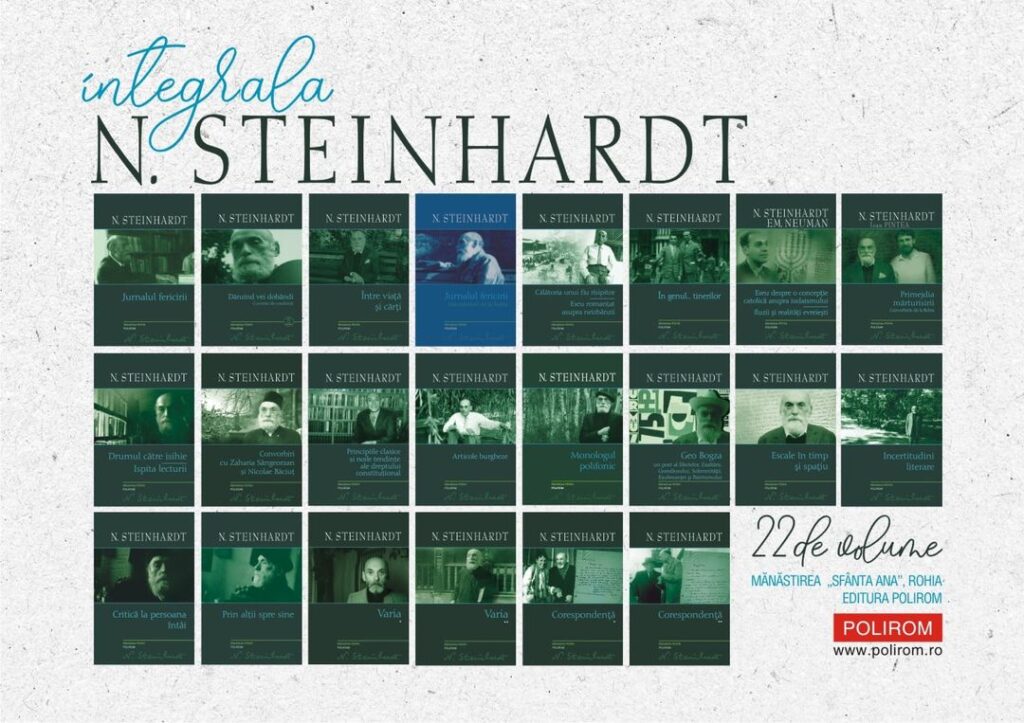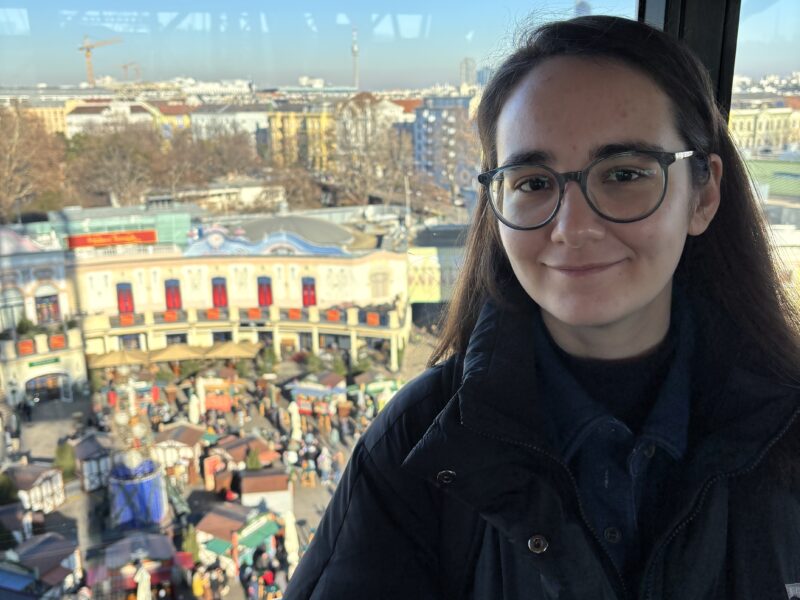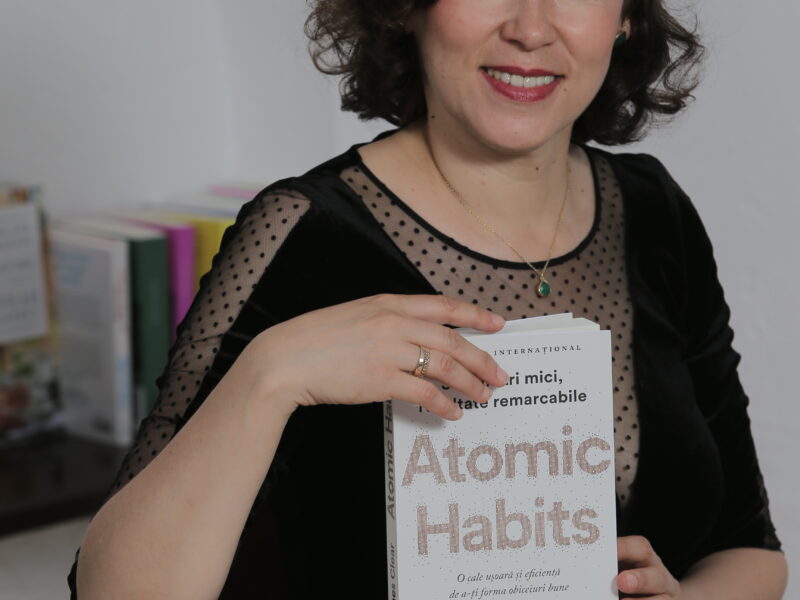George Ardeleanu is a professor at the University of Bucharest, teaching at the Faculty of Letters. He’s a member of the editorial board of The Complete Works of N. Steinhardt (Polirom Publishing House) and co-editor of The Complete Works of Dinu Pillat (Humanitas Publishing House). In 2009 he published the study of N. Steinhardt and the Paradoxes of Freedom (Humanitas); the book won prestigious awards, including the ones offered by the Union of Romanian Writers and the Observator Cultural. He’s the vice-president of the N. Steinhardt Foundation.
You are an university lecturer and also a researcher; however, your academic career had an unusual start. Talk me into your journey from the moment you graduated the Faculty of Letters to the moment you returned to there as a lecturer?
I graduated the Faculty of Letters in 1987 (it was called The Faculty of Philology back then). Up until 1990 I had worked as a Romanian Language and Literature teacher in Vulcan, in Valea Jiului. As you might know, up until 1990 all graduates were expected to undertake some sort of compulsory 3-year work experience in the pre-university education system. The schools we could teach at were limited – I found it disheartening (the big, attractive cities were off-limits and the jobs they had available were not offered on fair grounds. The available jobs were divided into three categories: jobs in villages with train connections, jobs in smaller villages with no train connections at all, and jobs in villages where people could only hope to have a train station one day). Fortunately, I was lucky enough to get a job in a village with a train connection (!), at a secondary school, in the aforementioned mining town. It was part of the Dallas neighborhood, where people wouldn’t venture past sunset. It was a difficult time for me; it coincided with the final years of the communist regime. Those times were dark, defined by terror, fear and suspicion. My family and I lived with scant resources. However, I should be grateful that this was not happening in the ʾ50s – when one could easily be imprisoned on political grounds. Fortunately, I wasn’t subjected to this “treatment” and I wasn’t coerced into forced labour. Furthermore, I benefited from some privileges, such as access to watching The Birch Wood directed by Andrzej Wajda, in a theatre full of soldiers who were working in coal mines (it was a show in itself)...
In 1990 the government released some teaching jobs through a competition method. This way I got a job at the Pedagogical High School in Bucharest (The Normal School – as it was called during the interwar period, the current Elena Cuza National College). It was a totally different experience – brilliant students, it was a true pleasure to work with them, they were open to explore ideas and concepts beyond the compulsory syllabus – this enabled us to diminish the syllabus’ shortcomings. Between 1998 and 2006 I taught world literature and Romanian literature at PRO College – it was a college dedicated to over-smart students, part of the Media PRO Foundation. This experience made a smooth transition to teaching at the Faculty of Letters much easier – there, in 1990, I got the position of teaching assistant.
I would also like to shed some light on the teaching experience I had acquired prior to the studentship period. Between 1982 and 1983 I worked at Păclișa Child Neuropsychiatry Hospital from Hunedoara county. It was placed on the Pogány Castle domains (where Margit Pogány lived, she inspired Constantin Brâncuși for his well-known sculpture Miss Pogány. It was a ”grounding” experience. Therefore, to answer your question, my career to this point hasn’t been linear. It has been rather patchy, mostly half-paved. I wrote about this important stage of my life more broadly in one of the Prof de română (Romanian Language Teacher) volumes, coordinated by Irina Georgescu, and released by Casa de Pariuri Literare Publishing House in 2019.
What does a work day look like for you?
Oh, if you expect it to look a certain way,I’m afraid my answer will disappoint you. My life style is brimming with irregularities; therefore no workday is the same. I don’t abide by some rigorous rules, or by any self-imposed discipline. Of course, a certain schedule is in place for the lectures I hold at university, and I do my best to follow it closely, as closely as I do with the rest of my commitments and deadlines, as part of my academic and research activity. I really dislike being late to my lectures, and also when it comes to submitting paperwork or when meeting a friend for beer or a cup of coffee. However, I also have my times of dawdling, for which Oblomov and Zahar, his servant, would envy me greatly (even though, in comparison with Oblomov, I’m not the owner of an estate), and there are times when I work frenetically and relentlessly to meet the deadlines I was just telling you about (this interview is an embarrassing exception [he laughs!]). Furthermore, Oblomov himself has a waking-up moment - when he puts down a hazel bush which was blocking his way to Olga... I know myself guilty of leaving everything on the last minute, but I eventually meet the deadlines – I don’t mess with people’s time.
You are teaching a course on the Great Romanian Classics and also a course on the writers who clashed with the repressive social mechanisms of the communist regime. What is the students’ opinion of the latter?
Yes, I teach the optional module called Literature and Gulag. Writers in political cases. Writers in the archives of the Securitate. The course is still popular, even though the current students are born around the 2000s, so – of course! – they don’t have a close biographical relationship with the communist period. Their relationship is rather mediated– they oscillate between the wide varieties of discourses that place those times at their centre. There is the anti-communist discourse, the nostalgic discourseit was much better in the Ceausescu’s times!), the partially balanced discourse(The communist regime had its good parts or or communism wasn’t such a bad idea so to speak, the problem was that it was poorly applied), the relativistic discourse (the past doesn’t matter, we should instead focus on the present and future times), and, one of the most wicked ones is the discourse which equalizes the mock trials of modern corrupt politicians with the political trials held back in the ʾ50s (I can’t particularly forget the trial of Adrian Năstase, published on every newspaper’s front page, in which his photo was shown alongside the ones of Iuliu Maniu, Ion Mihalache, Corneliu Coposu). Of course, there are plenty other discourses and... yet many more to come... (in her brilliant book, Second-hand Times, Svetlana Aleksievici established a plethora of attitudes towards the communist times and post-communist times). The students get confused when they get exposed to so many clashing opinions over the same times... they would like to know how it actually was back then...
How would you describe the experience of discovering the manuscript of The Diary of Happiness? I feel that the times of revelatory discoveries are long gone, so I imagine this particular discovery was somewhere in between reality and fiction.
I unexpectedly discovered this unique and special version of The Diary of Happiness during the summer of 2002, in the archives of Saint Ana Rohia Monastery, whilst I was doing some research for my PhD thesis on N. Steinhardt. The manuscript consists of a 529-pages long typescript – unfortunately incomplete (the first 137 pages are missing, and also some other pages from the main body of works). As I was going through it, I quickly realised this version was different from the one published in 1991 by Dacia Publishing House, and subsequently reprinted in eight further editions (I am also referring to the edition released in 2008 by Polirom, as part of The Complete Works of N. Steinhardt). The happiness brought by this discovery was indeed great; nevertheless it was complemented by a series of uncertainties and the regret of having discovered an incomplete manuscript. I wonder if this manuscript was in fact a second version, re-written out of memory, after the original one was seized by Securitate in 1972 or whether it was a third version, born out of the writer’s desire to unify the first two versions. I had known of the existence of the two versions out of the critical apparatus of the first editions released by Dacia Publishing House, curated by Virgil Ciomoș and Virgil Bulat, and also from La apa Vavilonului by Monica Lovinescu and from Steinhardt’s correspondence with Virgil Ierunca, first published in (The God in Which you Do Not Believe...) by Humanitas in 2000 (it was revealed from their correspondence that Steinhardt had the intention of unifying the first two editions). Then in 2004 I accessed some further materials stored by The National Council for the Study of the Securitate Archives (CNSAS)... where I could review the Surveillance and Tracking File opened on N. Steinhardt (11 volumes) which is a file in which The Diary of Happiness represents... a central topic of discussion. This way I could put together the fascinating and dramatic story of this book - which can be found in a chapter of my monography: N. Steinhardt și paradoxurile libertății (Humanitas, 2009) cât și ca postfață la cele două variante publicate la Polirom: The Diary of Happiness (2008) and The Diary of Happiness: The Rohia Manuscript 2012). Anyway, coming back to the typescript I found at Rohia, which, as you can see, has been named Jurnalul Fericirii. Manuscrisul de la Rohia, I am inclined to believe this version is the unified version of the first two – but this is just hypothetical, it hasn’t been proved. I would like to reiterate that the version released in 1991 by Dacia and then re-edited in eight further editions (I am including here the edition released in 2008 by Polirom) is the original version of The Diary of Happiness. Nevertheless, summarizing the story so drastically might leave it unclear to the readers of this interview. Things would get clearer for those who read the afore-mentioned foreword (it is around 40 pages long).
You’re a member of the editorial team of The Complete Works of N. Steinhardt. What are the preparatory stages for publishing a series of complete works?
A series of complete works requires coherency and unity; this is more than simply bringing together different works written by the same author. It requires an understanding of the works in the grand scheme of things: how do we approach it in relation to the previous editions? What are the selection criteria and how do include the press articles of the past within? What would be the order of the books?The idea we went on was publishing The Complete Works of N. Steinhardt the texts in a chronological order, with the exception of The Diary of Happiness and the collection of preaching words By Giving, You Shall Receive. Words of Faith (the first two volumes of the series) – in this case the symbolical criterion prevailed, along with (why not?) the pragmatic criterion (they were very successful indeed). As expected, such a literary architecture can go through various alterations throughout the process: for example, the initial project, Jurnalul Fericirii. Manuscrisul de la Rohia was initially placed towards the end of the miscelanea(since it was incomplete nevertheless). of the books? However, in 2012, on the occasion of celebrating 100 years from Steinhardt’s birth, Mr. Silviu Lupescu – the director of Polirom Publishing House – suggested to publish it then as a standalone publication, and not a part of the series of complete works – this is what happened after all and indeed I think it was a good idea. Furthermore, the first two volumes of miscelanea would have followed the volumes of Correspondence. In the end, we did change the order after all, and the Correspondence volumes wrapped the series of complete works.
Then we need to take into consideration the literary structure of every individual volume . Every volume has some degree of standardization, in the sense that every title has a complementary note on the edition in question, some key bibliographical notes, an introductory study, a substantial corpus of explanatory notes and a file of critical reception, footnotes (in the form of names, titles and places) etc. There are some variables regarding this as well, the two version of The Diary of Happiness – as I already said – an afterword based on the documents provided by CNSAS concerning the two confiscation instances of the 1972 and 1984 versions of Diary of Happiness. The Rohia’s Manuscript has side notes, which signifies the reference relationship between the two versions, and some final notes meant to systematize the observations resulted through the juxtaposition of the versions, as well as some other volumes having different appendixes etc.
It was ultimately about a long research process: unique texts, a wide variety of texts taken from cultural publications, which, the majority of them, have been published - through The Complete Works – for the first time in a volume (especially Burgeois Articles and the two miscelaneavolumes) and then a correspondence as lengthy as half a century (around 1200 letters in total), including some secret correspondence caught by Securitate etc. These two volumes of Correspondence, which wrapped up the series, have been the true challenge for me; the editing process itself was preceded by an ample process of identifying and collecting the letters, through investigating a wide range of archive documents (the personal archives of the addressees, some other private archive, the archives of some institutions, some volumes and publications where Steinhardt’s letters were published), then the whole process of photocopying and scanning the letters, organising them into a cohesive order, creating a paperwork record, collecting texts from other publishers and so on.
It’s worth discussing the texts themselves. What are the necessary steps in setting up a critical edition? What is the working method and what tools do you need to accomplish it?
I have partly answered to this question already. Nevertheless, as far as I am concerned, I wouldn’t say that The Complete Works of N. Steinhardt is a critical edition as such. I would rather call it, more flexibly, a scientific edition. I think the term critical edition is erroneously used too lightly. First of all, I haven’t always had access to Steinhardt’s manuscripts and typescripts, so it wouldn’t be fair to talk about a critical edition. His manuscripts had been only partly preserved. Because of this, we had to return to the previous editions in order to establish the original one -. of course, I added the above-mentioned critical apparatus – a fairly lengthy and complex process. The times I had access to the manuscript, I used footnotes to indicate the differences between the manuscript and the text published in the previous editions (some paragraphs and phrases added in the volume, cross outs from the manuscript, some words which had to be changed, sentences which had been left out, etc). We also must bear in mind the censorship phenomenon which had been in place up until 1990. As you can expect, Steinhardt’s texts were affected by this censorship, and, therefore, going back to his manuscript was beneficial in establishing the basic text. I occasionally discovered discrepancies between some articles published initially in various publications (or magazines), and then re-published in the volumes in question; these differences were pointed out in the footnotes. In general, I used various types of notes: notes which referenced the date and the place where the text was originally published, or to the archives where it was published; explanatory notes (some bibliographical references to authors and important cultural or historical personalities mentioned in Steinhardt’s texts, explaining some concepts and terms not accessible to wide audiences), the translations of some quotations, phrases and foreign terms, notes where I made some correlations between ideas and paragraphs across the texts, and, foremost, between these texts and the two versions of The Diary of Happiness. Given the history of this masterpiece, and that it would have been impossible to publish it during the communist regime, N. Steinhardt managed to imperceptibly insert some of his ideas and obsessions in the books he actually managed to publish (it was an inventive way of bypassing the communist censorship, his decision was somewhat subversive), nevertheless, this type of situation is explained in the footnotes. As previously said, The Diary of Happiness embodies Steinhardt’s entire work (even his previous texts too) - the critical apparatus of the project brings this aspect into attention.
Building up a critical apparatus involves, in fact, an intensive research stage: I remember I once spent half a day at the Central University Library, going through the interwar newspapers, only to get the information I needed to edit a single footnote. I also had to do some secondary readings of various volumes, dictionaries, encyclopaedias, surfed on the internet etc.
Going back to previous editions of N. Steinhardt’s volumes and establishing the base text, I preferred the volumes released while he was still alive and those published posthumously which had obtained his approval ( this is an essential part of the editing process). Also, I reserved the freedom in altering and amending parts of the texts in instances where the volumes were put together by various editors (to which we are nonetheless grateful).
We also had some linguistic problems. We say in general – without much thinking – that ‘the text is adapted in accordance with the current orthographical norms’. Nevertheless, we should not ignore the author’s distinguished signature, both from a linguistically and stylistically perspective. N. Steinhardt deliberately used the interwar forms of some words. In this case the dilemma of the editor is how much should they intervene and how much of the original text should they preserve? You can imagine how difficult this process is when it comes to working on a XIX-century text or even older.
What does putting up a critical edition entail?ʾWe need a textbook to answer this question (and we don’t have one). Also, the term ‘critical edition’ has changed through the passage of time. I shall wrap-up in a single sentence: an edition, be it critical or scientific, requires a good knowledge and thorough comprehension of the work and biography of the author they chose to edit.
The Complete Works of N. Steinhardt was published through the joint effort of Polirom Publishing House and Saint Ana Rohia Monastery, which, as you previously said, holds the copyright for the released texts. How did you come to this partnership, of more than 10 years, which included a global pandemic and a war?
As it is mentioned on page two of every volume of The Complete Works of N. Steinhardtseries, this partnership was initiated by P.S. Iustin Hodea Sigheteanul, Steinhardt’s disciple, the current Bishop of Maramureș and the region of Satu-Mare. Nevertheless, the necessity of such a thorough edition had been brought up in discussions as far back as 1999, when, with the occasion of N. Steinhardt’s birthday, the editorial committee pondered over the idea in question . As I previously stated with other occasions (for instance, as part of an interview given to Cristian Teodorescu for Cațavencii), the ”adventure” for this edition began to take shape de facto in 2006, when the editorial committee was summoned Complete Works series. Its members were Virgil Bulat (who sadly passed away in 2010), Florian Roatiș, Ștefan Ilioaie, the father Macarie Motogna on behalf of the monastery, and, as expected, myself. In 2010 we had to begin with the bare bones of of the books?– about which I previously discussed. The proper partnership with Polirom was established shortly after that, the process was fairly fast, no ”hustle” and I would like to think that I played an active role in suggesting such a partnership. During a Gala of held by the Union of Romanian Writers – I don’t remember the date exactly, it could have been the summer of 2007, I approached Silviu Lupescu and I pitched him the project. He was quite open to the idea. Shortly after this, to take shape the partnership between Rohia Monastery and Polirom became official, things began to make progress and, in 2008, the first five volumes of the series were published. Therefore, this partnership lsted for around ... 14 –15 years.
Other critics and researchers embarked on this project, and you collectively worked together. Can you please explain how you managed to keep a sense of coherence in your editorial and critical enterprise across the twenty two volumes?
As mentioned before, the direction of the of the books? project was established in its early stages, during the autumn of 2006, through the father Macarie Motogna from Saint Ana Rohia Monastery. Once the structure of the project was established, we split the volumes among us and we started the actual work. Nevertheless, beyond the editorial committee, we alsohad some guest-colleagues who curated a volume each: Viorica Nișcov and Nicolae Mecu, Ioan Pintea, Ioan Chirilă, Adrian Mureșan and Irina Ciobotaru. The agreement was that the members of the editorial committee, apart from curating the volumes they were assigned to, had to take a look over the rest of the volumes as well, and make observations, suggestions and come with additional notes and so on.
I wouldn’t say we had major problems (destructive, disruptive) in keeping it cohesive across the critical and editorial enterprise, since the structure was established in the early stages of the project. Of course, this does not mean that we didn’t have to make considerable efforts in ”adapting” ourselves to each other (I am referring to each other’s working style and rhythm, vanities, outbursts, different ”points of view”). I already touched on this, as early as 2008, in an article for Observator cultural (The Complete Works of Steinhardt: The Beginning Path). Nevertheless, as we were working under the patronage of a monk, we eventually managed to dissipate our pride, silence our vanities and meet in the middle during one dinner in Rohia.
I anticipate that beyond the passion and enthusiasm of each researcher who took part of this project, you needed some financial support for editing and publishing of the books?How did you manage to secure it?
As surprising as you might find it, we didn’t receive any external funds to publish of the books?. The editing and printing costs were entirely covered by Polirom. Saint Ana Rohia Monastery received a customary percentage of the copyright, and the editorial committee members all agreed a sum, which was paid by the Monastery.
How was the collaboration between the editorial board and Polirom’s team?
I’ve already said it on previous occasions and I say it once again: Excellent! I would like to give a shout out to those involved: Silviu Lupescu, Adrian Șerban, Emanuela Stoleriu (first and foremost!) Adrian Botez, Ioana Aneci, Ramona Lupu, Cezar Petrilă, Giuliano Sfichi, Radu Răileanu (he created the artistic concept of the series), Claudia Fitcoschi and Ionela Mihai (I thank them for their efforts in promoting the series) and so forth. Without their dedication to this project and their exemplary professionalism, The Complete Works would have only been a beautiful dream... Here’s another answer to your question “What does a critical edition require?”: it requires a truly professional publishing house.
You worked with Monica Pillat at editing The Complete Works of Dinu Pillat, a series of six volumes, released by Humanitas Publishing House. Was this experience different from the one you had with Steinhardt Complete Works in terms of your experience with the publishing houses?
I worked with Mrs Monica Pillat editing five out of the six volumes of of the books? Dinu Pillat. The novel Așteptând ceasul de apoi, released in 2010, was edited by Monica Pillat, with a foreword by Gabriel Liiceanu. The publication of this novel, which has a destiny both spectacular and tragic (it constituted the primary evidence in the 1959-1960 legal case against Dinu Pillat, then, after that, it disappeared for 50 years from Securitate’s archives - being considered forever lost by most researchers of the author’s biography and work) was a real surprise; it triggered the idea of (re)editing the other books by Dinu Pillat. It was in a way a real editorial driving force, the same could be said about The Diary of Happinessas well. Therefore, between 2011 and 2015 the rest of the volumes were released. It was an experience similar to the one of editing The Complete Works of N. Steinhardt, however this time I collaborated with Mrs. Pillat on editing each of the five volumes: we established together what we call in our editorial language the base text or the definitive text, then Mrs Pillat was making the note on the edition and the entire corpus of footnotes whereas I was writing the introductory study and the critical references. Of course, we collaborated on these aspects as well. It was a less ample project, given the reduced number of volumes. Dinu Pillat had, in a way, a destiny more tragic than N. Steinhardt, he died at the age of 54, at his creative peak. N. Steinhardt lived for 77 years, and, for those who went through what he had to endure (detention, prohibition, marginalization, permanent surveillance by Securitate), having gone through periods of time in which their biography and their work was put on hold, such an age gap made a real difference. The critical apparatus of The Complete Works of Dinu Pillat is also reduced, however these volumes have more illustrations (photos, facsimiles etc.). Nevertheless, the similarities between the two series, implicitly between the two editorial experiences, were greater than the differences.
You are teaching a course about critical editions at The Theory and Practice of Publishing Master’s program. How did you organize the themes and what is the students’ feedback?
The module was first called The Principles of Editing. Given that this initial title seemed too broad, I subsequently suggested a rather narrower title: Editions. Types, structures and practical how-tos. Yes, the course is related to my editorial experience and that’s why I was chosen to teach it. I started from the premise that, even though the curators of these editions are generally self-employed specialists external to the publishing houses, during the editing process they collaborate with people from inside the publishing house in question: the editorial directors, editors, proofreaders, graphic designers etc. Having said that, they ought to know the inner workings of this, they shouldn’t leave this to the curators of the book (whose competency, as it happens sometimes, can vary). My personal experience with these two professional publishing houses reinforced this point of view.
What are the topics this course tackles? Well, I’d like to mention the most important ones: the metamorphoses of the concept of philology and the relationship of this concept & field with the criticism of texts and the editions’ technique; the matter of establishing the base text (its difficulties, examples, the specificity of this process in cases where the texts were altered by censorship etc.); the editions type (critical, diplomatic, scientific, anastatic, popular), the editions’ structure (introductory study, language study, note over editions, the critical apparatus itself, indices etc.); dictionary of terms (the prototype, the original, the copy, the variant type, the version, edition, collation, emendation); problems of editing the works of Mihai Eminescu (controversies, rectifications), also of the Perpessicius editions, the internal editing norms of Polirom Publishing House and so on and so forth.
Even though this module is based on my experience as co-editor of the two Complete Works series, it also has a broader coverage, tackling the critical editing of older texts (which are much more complicated), and also of the modern literature texts of the 19th century (the I.H. Rădulescu critical edition, Gr. Alexandrescu, M. Eminescu, I.L. Caragiale and so forth). Nevertheless, I sometimes have the impression that these works are a dying breed (very few publishing houses are interested in releasing editions of this kind), I even mention this to my master’s students – in a more or less jokingly manner –; Petru Creția - in his Testamentul unui eminescolog - is not quite optimist either, but… we don’t give in.
You mentioned that for their final assessment, students have to write a short critical edition of a given text. To what degree do they manage to use the above-mentioned tools and also complete their research?
Well, it is rather a mock of a scientific edition. I cannot give them an entire volume to work on, it would be too much for their end of semester assessment. I normally suggest they work on books (memoirs, diaries, literary history and literary criticism, essays and so forth) which do not have a critical apparatus already and I require them to create one. Each volume is given to 4-5 students: they will each write an introductory study for the entire volume (it’s logical this way, isn’t it?) nevertheless each student will be responsible for creating a corpus of notes and an index for each 50 pages of the volume (the only requirement is that the 50-page fractions don’t overlap).
Some of my students have written full scientific editions for their final dissertation. I had the chance of coordinating some very good works of this kind: the scientific edition of Caron’s Boat by Lucian Blaga, La apa Vavilonului by Monica Lovinescu, The Years Have Passed… by Virgil Ierunca, The Life of a Lonely Man by Adrian Marino, Letters from Exile by Matei Călinescu and Ion Vianu etc.
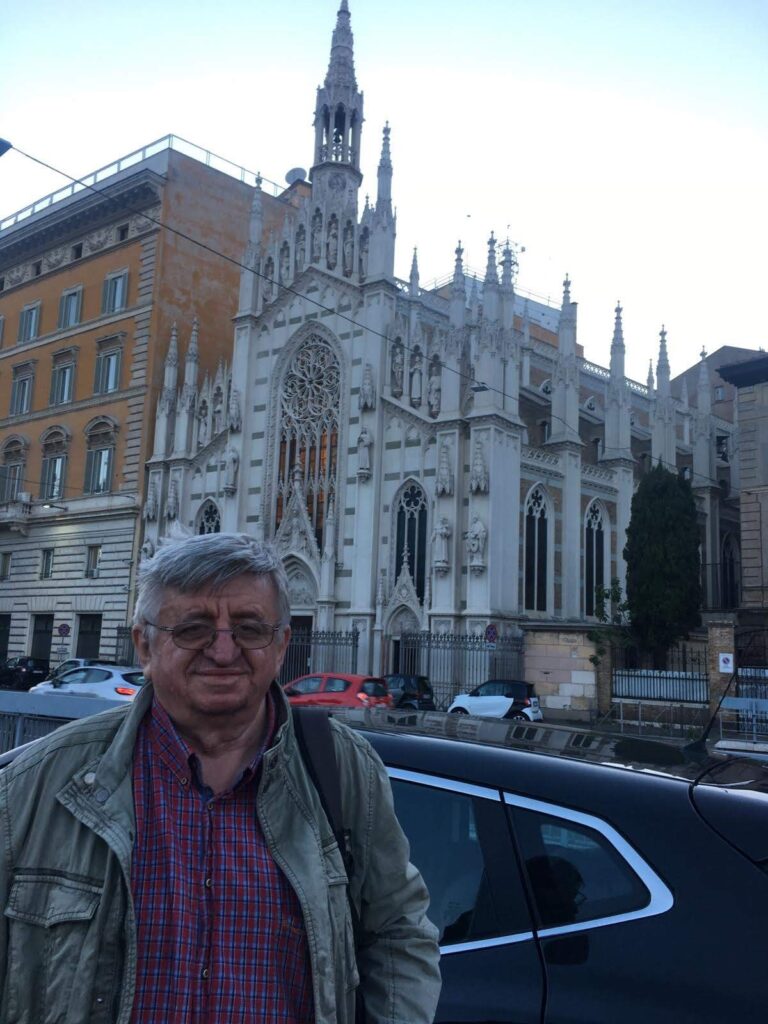
As part of the Master’s program, you also take care of organizing the students’ mandatory intership. What are the institutions you usually collaborate with and what are the students’ preferences?
Usually, for The Theory and Practice of Publishing Master’s, first year students do their placements within the editorial departments of some magazines (we’ve collaborated with Observator Cultural, România literară, Dilema veche, but also with the teams from Radio Romania Cultural) and also in some bookstores (such as Humanitas and Cărturești). Second year students did their placement module at various publishing houses (we collaborated with Humanitas, Curtea Veche, Nemira, Sigma, ART, MNLR, Coresi etc.). Oh, and of course: Livia Stoia Literary Agency [he laughs!]. What are the students’ preferences…? I guess it is rather confidential… Their preferences vary from one year to another.
What do you do to relax, when you put aside the books you work with for your courses, when you put on hold all the administrative tasks? What do you like to read?
Well, I read all sorts of books... however – as all readers, I think – I find it hard to cope with the flood of freshly published books, let aside the books which flood my house, my bookcase, the floor, the table, the chairs, even the bathroom and so forth. With regards to my preferences, I still have the ʾ90’s reflexes, prioritizing non-fiction books (memoirs, diaries, essays...). I enjoy watching films a lot, I am a genuine film lover. I love Bergman’s films, Tarkovski, Antonioni, Béla Tarr (I am one of the few crazy people who have watched Sátántangó, a 7h film, three times so far). I try to keep up with the recently Cannes awarded films and also the latest Romanian films. The last film I watched was last week (to my embarrassment, I knew nothing about the film or the director), within the French Film Festival, and it was La maman et la putain by Jean Eustache, from 1973. The actress Françoise Lebrun was also there, she played the lead role. It was such a revelation!
[The photos are part of Mr George Ardeleanu’s personal archive.] [Translated into English by Serena Marin.]

